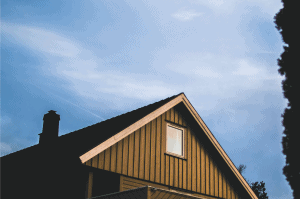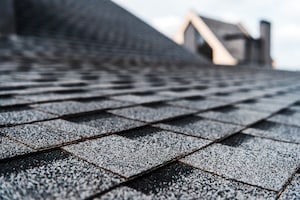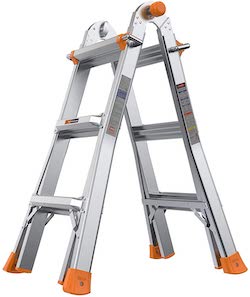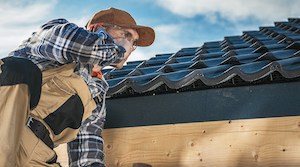How Old Is My Roof? 5 Quick Ways to Know Your Roof’s Age
Estimating how old a roof is can be difficult at times. In some cases, the easiest way to know how old your roof actually is is to check on documentation from previous replacements, but that isn’t always possible to do. If these problems are ignored, it could be a lot more painful to fix later on down the road. That’s why we want to help you identify how old your roof is.
How old is my roof? To see how old your roof is, you need to:
- Ask the Previous Owner
- Find the Local Roofer who Roofed the House
- Check to See if There is a Building Permit for the Roof
- Assess Visible Roof Damage to Estimate Age
- Have A Professional Roof Inspector or Roofing Company to Estimate the Age
Looks can be deceiving when it comes to roofing that has aged out. Even if things appear normal by looking at them, it’s not a bad idea to have a contractor come out and do a real inspection of the roof in question. Unseen issues can be hidden by the shingles that you would have otherwise not have noticed. Here are some practical ways to do some assessments on your own before the roof inspection takes place.
1. Ask the Previous Owner (Quickest and Easiest Way)
A quick check with the previous owner may be just what you need to get the age of the roof. Getting a hold of the previous owner may be a challenge but there are a variety of ways online now to track them down.
Ways to Find the Previous Owner
– Ask Your Realtor They may be able to contact the realtor that worked for the seller. This would lead to the previous owners.
– Check Social Media If you have the names of the previous owners you may be able to find them on Facebook, Twitter or Instagram and then send them a direct message.
– Do a Google search A quick search on Google could lead you right to the owner.
– Do a Find People Search Visit Find People Search and do a search to locate them.
– Hire a private investigator This would be the most costly but could help you reach your end goal.
2. Find the Local Roofer who Roofed the House
This could be a time consuming way to find the roofs age but you may get lucky. Again utilize Google or the yellow pages to track down local roofers. A few calls to some of the main roofers in your area may yield results. If you live in a rural area you may have better luck due to a smaller amount of local roofers. If they keep good records or have a great memory you could be in business.
3. Check to See if There is a Building Permit for the Roof
When you check in on the permit you should be able to get a date that the building permit was filed. This would be close to the time the house was roofed. The roof replacement would require the same permit as any major work done on the house. Some states don’t require a permit. If you live in a state that doesn’t require a permit for a roof this may be a dead end. Also if the cost of the roof is under a certain threshold they previous owners or roofer would not be required to get a permit.

How to Estimate the Roofs Age
4. Assess Visible Roof Damage to Estimate Age
You can only learn so much by climbing up a ladder and walking around your roof if you aren’t quite sure what to look for, so here are a few tips for assessing visible roof damage for different types of roofing materials:
Wooden Shake or Shingles: Depending on what climate you live in, you want to be on the lookout for any proof of warpage or dry rot if you are using these materials. You also want to be sure you know what the differences are when it comes to shingles and shakes; shakes are hand-split on at least one face and either tapered or straight, while shingles are sawn and tapered. If you have noticed any problems with this material, and the official roof inspection has shown that around one-third of the material is damaged, it is most definitely time for a roof replacement. As a side note, you want to be sure to avoid walking on this material during an inspection because of how unstable it is.
Slate, Clay or Tile: If properly taken care of, this type of roofing material can last for an entire lifetime. While they are a bit more high-end and more expensive, the longevity is definitely worth it. The biggest downfall with this material is that they are more susceptible to unstable climates and ice damage. Because this material is so easy to break, you would want to do any kind of inspection by using binoculars to avoid any further damage by walking on the roof. You want to be on the lookout for chipped, broken or missing pieces of the tile.
Roof Flashings: If you have any chimneys, vent pipes or dormers, flashings are the metal pieces that cover these types of interruptions. If there is any type of damage to these areas, you want to resolve them as soon as possible. If not taken care of, faulty flashing will allow unwanted leakage from snow or rain to enter the interior of the roof and even cause interior wall damage.
Metal Roofing: A metal roof can last for a really long time if you take the time to properly maintain and paint it. This type of roofing material comes in aluminum, galvanized iron, lead, steel, and copper. Each different type of metal has its own response to age, but you generally want to keep an eye out for any signs of rusting, pitting and corrosion. You also want to look for any open or loose joints or seams that can eventually lead to unwanted leakage.
Asphalt: If you have an asphalt roof, you have a roof that has a granular surface very similar to really fine gravel. When this material gets older, it becomes quite brittle, and the very small granules will become loose over long periods. If you find a good number of these types of granules inside your gutters, it is a sure sign that your roof is getting pretty old. Check the asphalt shingles for any bare spots and keep an eye out for the warpage or tearing in the material. If there is a lot of curling on the shingles, it is also a sign that your roof is aging and needs to be replaced.
You’ll need a safe and strong ladder to assess your own roof. Here is an option that could make the job easier:
5. Have A Professional Roof Inspector to Estimate the Age
A roofing professional can take a closer look at the type or roof and areas of damage and wear to give an estimate of the age of roof. A few of the things that the roof specialist will look at are things like wind damage, hail damage and tile damage. The roof inspector may also be able to work with your homeowners insurance company if they find damage that will be covered under you policy.
Learn more in our article on how to get your insurance to pay for a new roof.
Wind Damage: Strong winds can cause your roof to experience significant problems. If the structural joists at the foundation of your home come loose as an effect of withstanding large gusts of wind, or even the decking of your roof takes on damage, it is almost certain that you will be having a big problem with leaks. Water will drip through the joists and granules that are loose and cause mildew and mold to flourish without you knowing about it. Leaving this leakage untreated will lead to other issues like an excessively wet lawn, peeling paint and wallpaper, pest infestations, and rot.
Hail Damage: While some hail damage is easy to see right off the bat, it can also cause damage that isn’t so easily visible. If your roof is damaged by hail, you most likely won’t see any indentations or holes. Unless the hail is around the size of a golf ball, you won’t be seeing the effects of it. However, even the smallest pieces of hail are able to damage the integrity of your shingles and cause the granules to become loosened. If this happens enough, your asphalt will eventually become exposed. This will put your roof in danger of becoming severely damaged and give it a very short life.
Tile Damage: Tiles are a very long-lasting and strong material to use when roofing your home and won’t easily buckle under the pressure of some of the most intense storms. However, if the winds are strong enough, the tiles will lift and sometimes even shift. Ultimately, this can compromise the integrity of your roof, and you will need to look very carefully to notice any damages.
If the tiles have shifted, they will most likely need to be replaced because there is a possibility that the shifting has damaged the functioning system. If this functioning system is in fact cracked, it could cause severe leaking from the cracks and holes that have appeared as a result of the shift.
If you do have this kind of roofing material, it will need special attention because the play of shadow and light, color and even the texture all bring a one of a kind characteristic to the building that this roof is sitting on. Unfortunately, this type of roof can easily be lost because of ignorance, negligence or poor treatment by roofing contractors.
A few Tips for Hiring a Professional Roof Inspections
Ultimately, the easiest and best way to assess the age estimate and condition of your roof is to hire a roofing specialist to come and give an honest and thorough inspection of your roof.
Professional Inspections Are Accurate —A roofing professional will be able to use their years of experience to help you avoid the really expensive and unseen issues much quicker than you or I ever could. Most roofing professionals will be able to see the problem before it gets completely out of control and ends up costing you way more money. Having a professional roofer check your roof is good for maintenance and upkeep. Just like you wouldn’t neglect your teeth by never going to the dentist, having a roofer take a look at your roof from time to time could help prevent major issues. If you go with a true professional, they will be able to help minimize the odds of yearly inspections and get an end result that will last the test of time.
Professional Inspections Are Usually Free —Roof inspections are almost always free! Make sure to ask before they come out. Why wouldn’t you take advantage of having a professional come look at your roof for no additional cost? There won’t be any add-on services or any additional hidden fees, just a good ol’ fashioned roof inspection to help you figure out the problems you need to address.
Professional Inspections Are Safe —You won’t be able to have an accurate assessment of your roof from the ground even if you follow the tips given above, so that means someone needs to get on the roof. Why take the risk of you or a loved one suffering personal injuries? Hiring a professional roofer means that you can be worry-free while your roof gets an accurate inspection. Roofers know exactly how to handle climbing on a roof because they have years of experience and know what to expect. That’s why it’s a really good idea to remove the fear of falling from the equation by trusting a local roofing specialist to get the job done. Most roofers also know how to communicate with local insurance companies so they can let you know what will and will not be covered by your homeowners insurance policy.
In conclusion, the quickest and most accurate way would be to contact the previous owners, the roofer who added the roof or find out the age of the roof from the permit. If these two methods don’t work you’ll be down to estimating the roof your self or contacting a roofing specialist.



